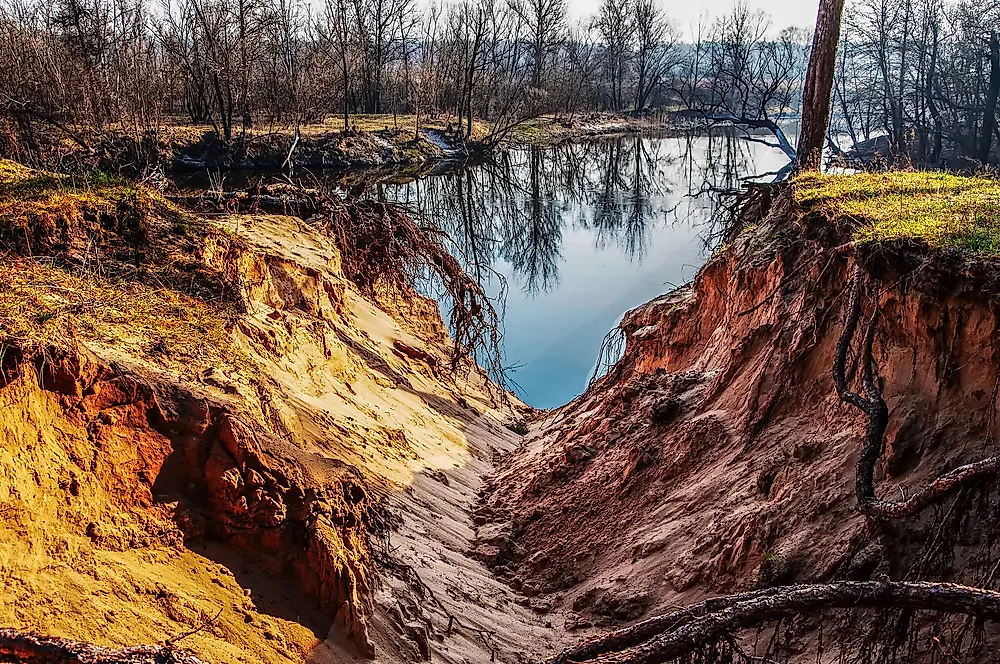What is a Gully?

Surface Run-off
Surface-runoff resulting from heavy rainfall on a bare ground leads to the removal of soil, rock, and other material from one location. These materials are then transport them to another location in a process known as erosion. Physical erosion involves the breakdown of soil into clastic sediments while chemical erosion involves removal of soil and rocks by first dissolving them in a solvent. Although soil erosion is a natural process, human activities such as deforestation, unsustainable agriculture, and clearing of vegetation cover increase the rate of erosion by 10-40 times. The surface runoff produces four main types of erosion including splash, rill, sheet, and gully erosion. Gully erosion occurs when water rapidly flows in the channel after heavy rain, removing soil to a considerable depth.
What Is A Gully?
Gullies are landforms created by surface runoff which erodes deep into the soil, especially on the hillside. Gullies are like wide ditches or developing valleys but are a few feet deep and wide. Gullies are formed by gully erosion and continue to move by headwater erosion or by slumping of the side walls if necessary steps are not taken to control the erosion. The term ‘gully’ originated from French word ‘goule’ meaning throat. The term may also have been derived from a type of knife known as gully-knife since the hills with gullies look as if they have dissected with a sharp knife
How Are Gullies Formed?
Gullies are formed through a process of gullying or gully erosion. Gully erosion is one of the four main types of erosion that is mainly common on the hillside. Areas lacking vegetation cover as a result of deforestation, overgrazing, or any other means are prone to gully erosion. When water flows through a narrow channel during a heavy rainfall or after a heavy snow melt, it widens the width of the channel by eroding its walls. The narrow channel widens and also deepens through the repeated action of the flowing water. The loose soil is easily carried away by water from the ground. Gullies increase in length through headward erosion at a knick point. Gullies can also be created or modified by a number of human activities including hydraulic mining and diversion of the stream flow to the hillside.
Consequences Of Gullies
Gullies, just like any effect of soil erosion, reduce the productivity of farmland. They also dissect properties causing access and management of the land difficult and reduce their values. Gullies also cause destruction to farm and land improvements like fences or tracks. Sediments carried by carried by the flowing water causes discoloration and may also block waterway, fill dams, and lower paddocks.
Control Measures
Gullies can be effectively controlled by either sorting out the problem in the catchment or by stabilizing the gully itself. The objective fixing the catchment is to divert the water flow into a more stable drainage area. Water can be diverted from the areas prone to gully erosion, thus reducing the erosive power of water over an area that is well vegetated. Gullies can also be stabilized by modifying the flow of water moving through a gully so that the scouring effect is reduced allowing the sediments to accumulate. Gully erosion can be generally prevented by maintaining vegetation along the drainage lines and eliminating activities that deplete the soil of the vegetation cover.











